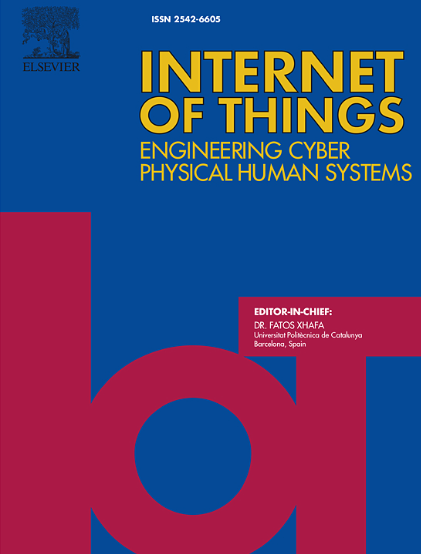An efficient and versatile Digital Twin model implementation for autonomous connected vehicles based on distributed, low-latency working memory
IF 6
3区 计算机科学
Q1 COMPUTER SCIENCE, INFORMATION SYSTEMS
引用次数: 0
Abstract
The growing interest in Connected Autonomous Vehicles (CAVs) has led to increased focus on technologies and algorithms that improve their behaviour, comfort, and safety. Central to these advancements is the application of Digital Twin (DT) models, an evolution of Cyber–Physical Systems (CPSs) that has attracted considerable attention in the scientific community. These DTs offer many possibilities by linking real-world activities with their twin counterparts, allowing for the anticipation of scenarios to prevent or improve the handling of different situations. This paper proposes a DT model paradigm for CAVs, supported by a distributed architecture of software agents. This architecture, named CORTEX, forms the core of our DT model and is characterised by its synchronisation capabilities, shared memory, versatility, performance and scalability. The proposed solution combines this distributed architecture with CARLA as its internal simulator. It uses probabilistic models to regulate and select optimal simulations for predicting risky situations during driving, among other capabilities. To validate our proposed DT model, we also present an algorithm that facilitates early detection of potential collisions between autonomous vehicles and pedestrians on their path by generating and simulating traffic scenes unsupervised and applying a particle filter-based methodology to evaluate risk situations. The results show that the proposed DT framework can effectively apply to autonomous driving systems. The DT architecture has been tested by a real electric autonomous vehicle on a university campus, demonstrating its effectiveness in anticipation and safe real-time decision-making.
基于分布式、低延迟工作记忆的自动联网汽车的高效、通用数字孪生模型实现
人们对互联自动驾驶汽车(cav)的兴趣日益浓厚,这使得人们越来越关注改善其行为、舒适性和安全性的技术和算法。这些进步的核心是数字孪生(DT)模型的应用,这是信息物理系统(cps)的一种演变,在科学界引起了相当大的关注。这些dt通过将真实世界的活动与它们的孪生对应物联系起来,提供了许多可能性,允许对场景进行预测,以防止或改进对不同情况的处理。本文提出了一种由软件代理的分布式体系结构支持的cav的DT模型范式。这种被命名为CORTEX的架构构成了我们DT模型的核心,其特点是其同步能力、共享内存、多功能性、性能和可扩展性。提出的解决方案将这种分布式体系结构与CARLA作为其内部模拟器相结合。它使用概率模型来调节和选择最佳模拟,以预测驾驶过程中的危险情况,以及其他功能。为了验证我们提出的DT模型,我们还提出了一种算法,该算法通过生成和模拟无监督的交通场景,并应用基于粒子滤波的方法来评估风险情况,从而促进自动驾驶汽车与行人之间潜在碰撞的早期检测。结果表明,所提出的DT框架可以有效地应用于自动驾驶系统。DT架构已在一所大学校园内的一辆真正的电动自动驾驶汽车上进行了测试,证明了其在预测和安全实时决策方面的有效性。
本文章由计算机程序翻译,如有差异,请以英文原文为准。
求助全文
约1分钟内获得全文
求助全文
来源期刊

Internet of Things
Multiple-
CiteScore
3.60
自引率
5.10%
发文量
115
审稿时长
37 days
期刊介绍:
Internet of Things; Engineering Cyber Physical Human Systems is a comprehensive journal encouraging cross collaboration between researchers, engineers and practitioners in the field of IoT & Cyber Physical Human Systems. The journal offers a unique platform to exchange scientific information on the entire breadth of technology, science, and societal applications of the IoT.
The journal will place a high priority on timely publication, and provide a home for high quality.
Furthermore, IOT is interested in publishing topical Special Issues on any aspect of IOT.
 求助内容:
求助内容: 应助结果提醒方式:
应助结果提醒方式:


